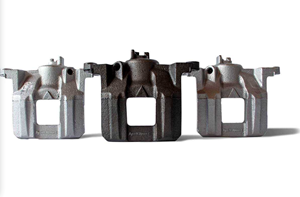More in Failure of Zinc Plating
In the December issue of Products Finishing, I addressed a question regarding the failure of zinc plating around welds. One of our readers emailed me and correctly pointed out that I only addressed the plating but failed to address the quality of the parts and welded areas.
In the December issue of Products Finishing, I addressed a question regarding the failure of zinc plating around welds. One of our readers emailed me and correctly pointed out that I only addressed the plating but failed to address the quality of the parts and welded areas. I have reprinted the original question and my added comments:
Q. Our company produces steel components that are welded and sent out to a plating vendor for zinc plating and a trivalent chromium chemical conversion coating.
On some of these parts, the zinc plate deteriorates after short periods of storage. Corrosion appears along welds and close to the weld areas. We know that the plater is using an acid chloride zinc plating bath. I have attached a process sequence given to me by the plating vendor.
Do you have any suggestions for eliminating this corrosion problem that we are seeing with our parts? S. J.
A. Based on the information you provided, I am convinced that the issue you are facing has to do with cleaning of the welded parts prior to the electroplating process. Most likely all of the fluids that the parts come in contact with prior to the welding step have not been completely removed from the surface of the parts. The fluids contain both organic and inorganic materials.
If these materials are not completely removed, they can be converted to materials that have very different properties when exposed to high temperatures required during the welding process. Some of the simple organic materials, such as stearic acid, will polymerize at higher temperatures. These polymers are very difficult to remove in most cases and require more vigorous cleaning.
The best way to handle this is to thoroughly clean the parts prior to the welding step. This should make the plater’s job easier. If this is not possible, then you have to go to plan B. Plan B is to work with your plating vendor to develop a more robust cleaning process.
The cleaning process outlined in your process flow diagram is probably adequate for many types of soils but apparently is not working properly in your particular case. What you should do is go to your plating vendor and work with him developing a better cleaning process. I suggest you talk to the vendors of the various fluids used in the manufacturing of the parts and determine what type of cleaning process they recommend to remove these materials.
You can then take that information to your plater and hopefully develop a better cleaning process. You mentioned in your email that you have sent samples out for surface analysis and I would suggest that after you experiment with the cleaning process, samples be sent again to the laboratory to determine if all of the organics and other materials have been completely removed.
My additional comments
The reader correctly pointed out that quite often the plater receives parts that might be better sent directly to the dump. In the case of welds, they may not be of the best quality. Such things as porosity and excess flux all may be present in the weld areas. What happens when you have a porous non-airtight weld? You have what I like to call a sponge effect: Liquids such as cleaners and plating solutions are sucked into the pores from the sloppy weld. The results of this are stains and corrosion in the weld area. Excessive cleaning prior to the plating of the parts can only make the problem worse.
Sadly, the plater often has to “clean up” everybody else’s mess. It seems to me that many people in the manufacturing area assume that plating is like filling in nail holes in molding prior to painting. Blemishes and other problems on the surface can all be solved by putting a layer of metal on top of the imperfect base material. If it was only that simple! Thanks to Paul Posey for taking the time to point this out to me.
Related Content
Trivalent Chrome Overview
As the finishing industry begins to move away from the use of hexavalent chromium to trivalent chromium, what factors should finishers consider as they make new investments? Mark Schario, chief technology officer for Columbia Chemical offers a helpful overview of this complicated topic.
Read MoreHow to Choose Between Sulfate and Chloride-Based Trivalent Chromium
There are several factors to consider when choosing between sulfate and chloride-based baths for trivalent chromium plating. Mark Schario of Columbia Chemical discusses the differences and what platers should keep in mind when evaluating options.
Read MoreProducts Finishing Reveals 2023 Qualifying Top Shops
Each year PF conducts its Top Shops Benchmarking Survey, offering shops a tool to better understand their overall performance in the industry. The program also recognizes shops that meet a set of criteria to qualify as Top Shops.
Read MoreRead Next
Episode 45: An Interview with Chandler Mancuso, MacDermid Envio Solutions
Chandler Mancuso, technical director with MacDermid Envio discusses updating your wastewater treatment system and implementing materials recycling solutions to increase efficiencies, control costs and reduce environmental impact.
Read MoreDelivering Increased Benefits to Greenhouse Films
Baystar's Borstar technology is helping customers deliver better, more reliable production methods to greenhouse agriculture.
Read More
























